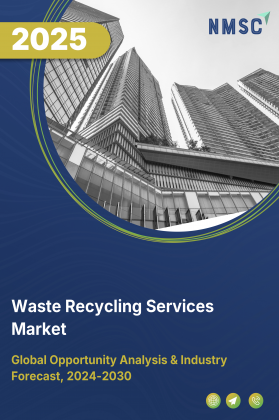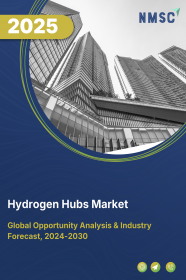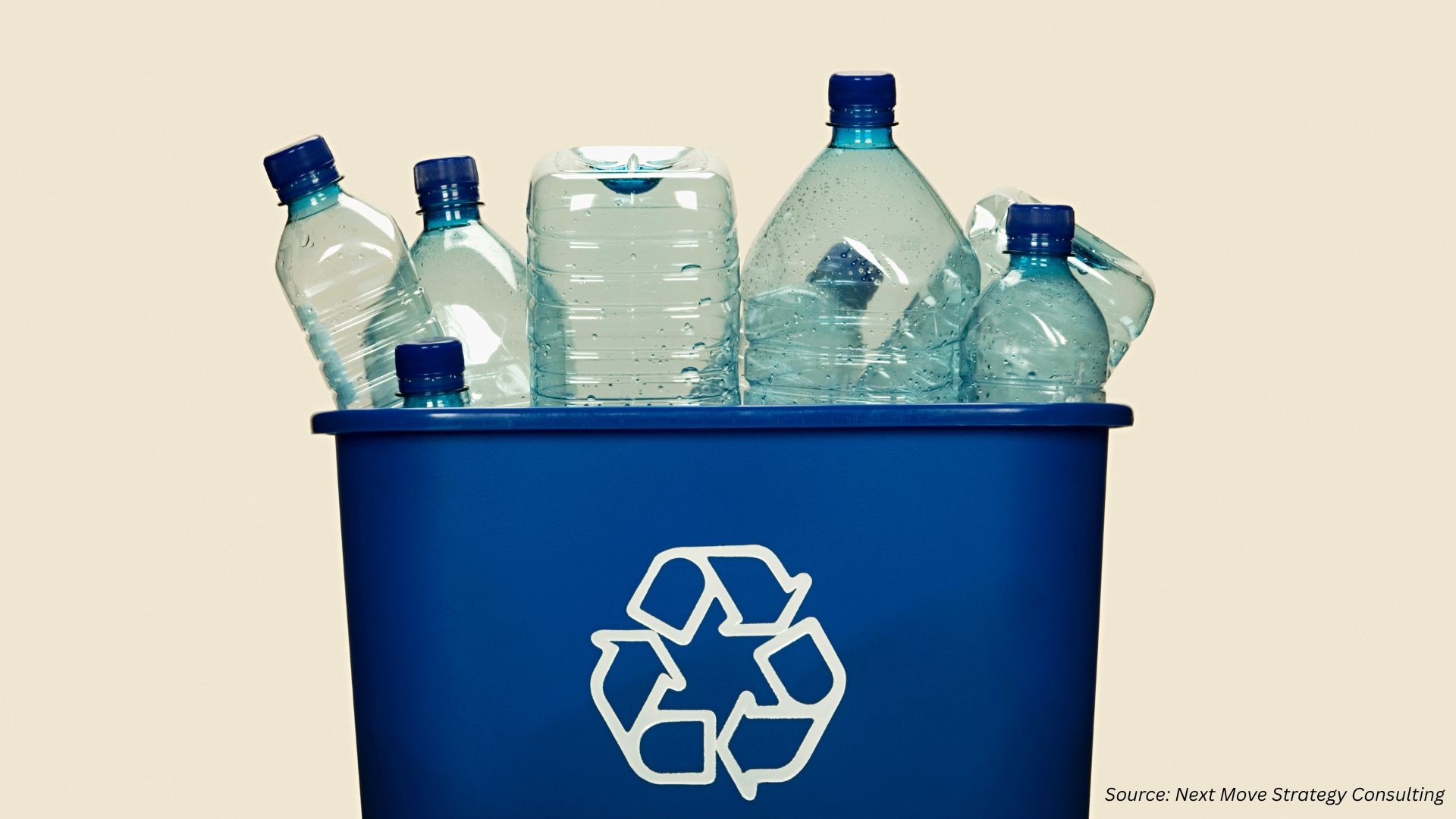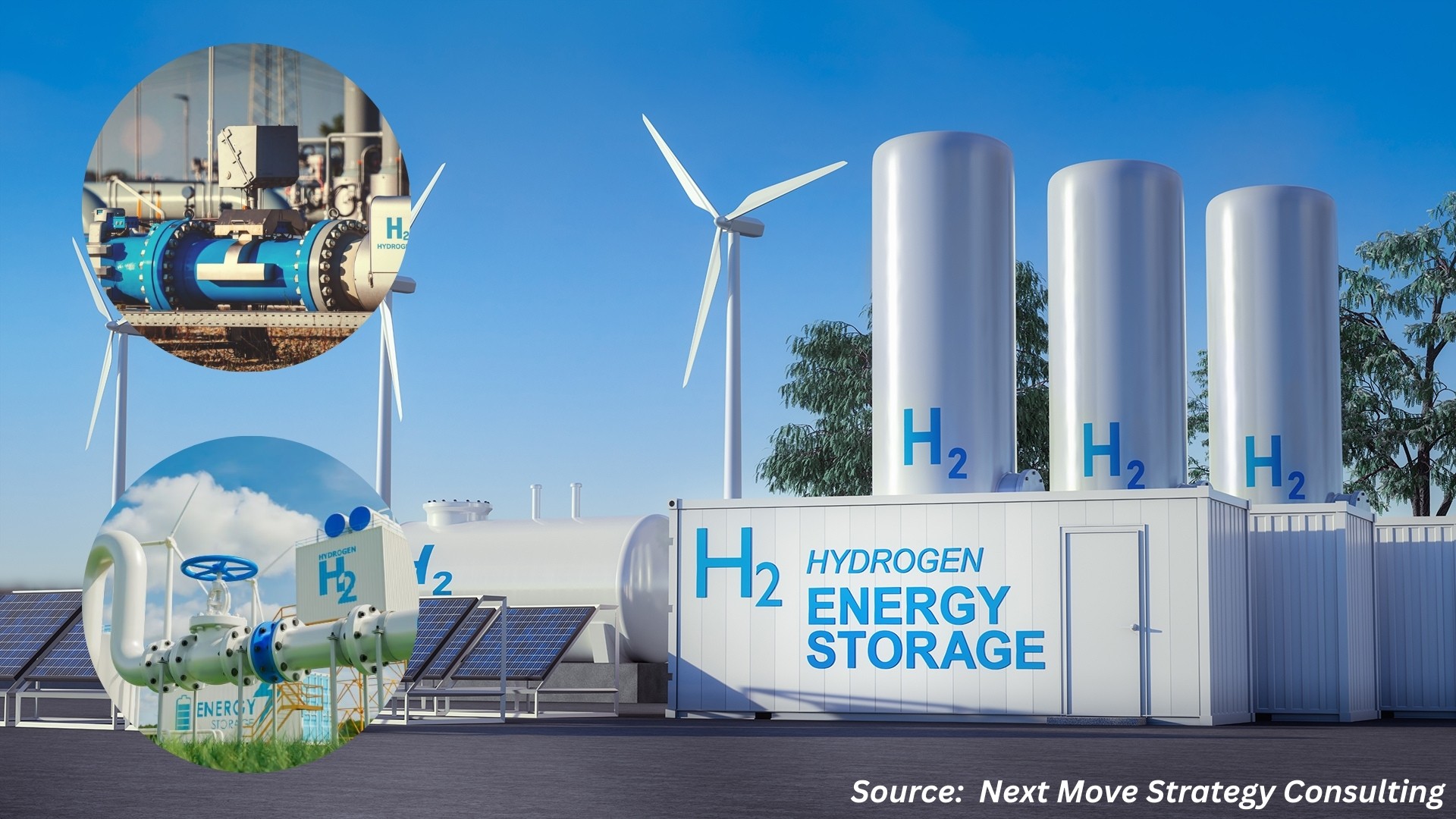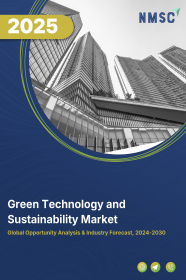
Green Technology and Sustainability Market by Component (Solutions, Services), Enterprise Size (SMEs, Large), Technology (Renewable Energy, Energy Efficiency, Green Building, Water & Waste Management, Sustainable Transportation, Agriculture, Others), Application (Residential, Commercial, Industrial), and End-User (Energy, Transportation, Construction, Manufacturing, Waste & Water Management, Agriculture, Others) – Global Opportunity Analysis and Forecast, 2024–2030
Green Technology and Sustainability Market Overview
The global Green Technology and Sustainability Market size was valued at USD 17.38 billion in 2023 and is predicted to reach USD 67.82 billion by 2030 with a CAGR of 21.5% from 2024-2030.
The green technology and sustainability Industry includes a broad range of innovations aimed at reducing environmental impact and promote sustainable development. This industry comprises of technologies, products, and services that minimize energy consumption, reduce waste, lower emissions, and utilize renewable resources.
Key components of this market are renewable energy (solar, wind, hydro, and bioenergy), energy efficiency solutions, sustainable transportation, green building materials, waste management and recycling technologies, water purification systems, and sustainable agriculture. Companies in this industry are driven by the goals of reducing the carbon footprint, conserving natural resources, and enhancing ecosystem health.
Market Dynamics and Trends
Increasing global demand for clean energy sources including solar, wind, and hydropower drives investment in renewable energy technologies, as supportive government policies and financial incentives encourage the development of green power projects. This shift is further propelled by efforts to reduce greenhouse gas emissions to combat climate change and enhance energy security through the diversification of energy sources, reducing dependence on fossil fuels.
The UK government initiated a record budget of USD 1.9 billion for its upcoming renewable energy auction, with a substantial emphasis on offshore wind projects, allocating USD 1.4 billion, surpassing the total from all prior auctions. This investment aims to enhance energy security, reduce costs for consumers, and support the transition to renewable energy sources.
Also, rising demand for energy efficiency and cleaner air drives the adoption of electric vehicles (EVs) and alternative fuel vehicles, as stricter emission regulations push the automotive industry to develop and adopt cleaner technologies. Technological advancements and growing consumer interest in eco-friendly options further stimulate the market for sustainable transportation solutions.
As per the data provided by the International Energy Agency (IEA), the total number of EVs sold globally in the year 2023 is recorded at 13.80 million cars as compared with the total number of EVs in 2022 with only 10.20 million cars. This upsurge in adoption of EVs further contribute to the global demand for green technology and sustainability.
Moreover, growing adoption of green building standards, such as Leadership in Energy and Environmental Design (LEED), drives the use of sustainable materials and practices in construction. This shift towards energy efficiency and sustainable design is fueled by urbanization and government regulations aimed at minimizing environmental impact.
For example, in February 2024, Symetri launched Naviate Zero, an Autodesk Revit add-on designed to enhance sustainability in building design by enabling users to calculate emissions and make eco-conscious decisions throughout a project’s lifecycle.
This innovative tool leverages a partnership with One Click LCA to provide architects with access to comprehensive building material data, promoting significant environmental benefits from the early stages of design. However, inconsistent government policies and regulations towards investment in green technology hinders the green technology and sustainability market growth.
On the contrary, integration of smart grid technologies and the Internet of Things (IoT) enables real-time energy monitoring and optimization, improving efficiency and reducing costs. This advancement enhances grid resilience and supports the broader adoption of renewable energy sources which is expected to create ample opportunity of the green technology and sustainability market expansion. For example, in April 2024, Siemens Smart Infrastructure launched Electrification X, a suite of applications aimed at enhancing productivity, reliability, and sustainability in electrification infrastructure for various sectors, including renewable energy, utilities, and industries.
This highly scalable Internet-of-Things (IoT) Software as a Service (SaaS) solution is built on cloud technology and focuses on managing, optimizing, and automating electrification systems to improve efficiency while reducing costs and carbon emissions.
Market Segmentation and Scope of Study
The green technology and sustainability market report is divided on the basis of component, enterprise size, technology, application, end user and region. On the basis of component, the market is classified into solutions and services. The solution segment is divided into cloud based and on premise. The solutions segment is again divided into professional services and managed services. On the basis of technology, the market is categorized into renewable energy technologies, energy efficiency technologies, green building technologies, water and waste management technologies, sustainable transportation technologies, agricultural and land management technologies and other technologies. On the basis of application, the market is classified into residential, commercial and industrial. On the basis of end user, the market is segmented into energy and power, transportation, construction, manufacturing, waste and water management, agriculture, and other end users. Regional breakdown and analysis of each of the aforesaid segments includes regions comprising of North America, Europe, Asia-Pacific, and RoW.
Geographical Analysis
North America dominates the green technology and sustainability market share at present and is expected to continue its dominance throughout the forecast period. This is attributed to the rising government policies and incentives towards renewable energy and efficiency projects that stimulate market growth by reducing costs and encouraging investment in green technologies.
For example, the Greening Government Initiative (GGI) aims to enhance federal sustainability by promoting carbon pollution-free electricity, zero-emission vehicles, and net-zero emissions in buildings and operations. It emphasizes equitable practices, climate-resilient infrastructure, and workforce development to address climate challenges effectively in the U.S. and Canada.
Also, the leading companies are adopting various business strategies including partnerships that in turn is boosting the market growth. For instance, in September 2023, GE Vernova and EnergyHub partnered to launch a new integrated Distributed Energy Resource Management System (DERMS) software solution.
This collaboration aims to enhance the management and optimization of distributed energy resources, allowing utilities to better integrate renewable energy sources and improve grid reliability.
On the other hand, Asia-Pacific is considered fastest growing region owing to the increasing government support and subsidies for sustainable agriculture boost the adoption of green technologies in farming.
This helps address food security needs and adapt to climate change impacts. For example, in November 2023, the government of India launched the "Clean and Green Village" initiative to promote sustainable rural development through agroecological approaches such as natural farming, organic farming, biogas production, and waste management.
This initiative aims to transform rural areas by enhancing sustainability across social, economic, and environmental dimensions, with various ministries collaborating to implement the program.
Furthermore, rising urban populations lead to more waste and higher water demands, prompting investments in advanced waste and water management technologies. In December 2023, South Korea's Samyang Corp. developed new industrial water treatment products designed to produce ultrapure water, crucial for semiconductor manufacturing. This launch addresses the rising need for sustainable solutions in the manufacturing processes.
Competitive Landscape
Various key players in the green technology and sustainability industry includes Microsoft Corporation, International Business Machines (IBM) Corporation, Apple Inc., General Electric, Intel Corporation, First Solar, Inc., Samsung Electronics, Schneider Electric, Brookfield Renewables Partners, Cisco Systems, Inc., among others.
These market players are opting various strategies such as partnership and business expansion to maintain their dominance in the global green technology and sustainability market.
For instance, in October 2023, Microsoft and EY partnered to launch the Green Skills Passport, a free online program designed to help individuals aged 16 and over acquire skills for green jobs in the growing green economy. The initiative includes a 10-hour virtual course that covers sustainability, entrepreneurship, and employment skills, aiming to prepare underserved communities for future workforce opportunities.
Moreover, in November 2023, IBM expanded its sustainability initiatives with the IBM sustainability accelerator, which launched five new projects aimed at improving water management solutions. Additionally, IBM SkillsBuild is offering free training to develop a talent pipeline that connects advanced technologies with ecological and climate change challenges.
Key Benefits
-
The report provides quantitative analysis and estimations of the green technology and sustainability market from 2024 to 2030, which assists in identifying the prevailing industry opportunities.
-
The study comprises a deep-dive analysis of the current and future green technology and sustainability market trends to depict prevalent investment pockets in the industry.
-
Information related to key drivers, restraints, and opportunities and their impact on the market is provided in the report.
-
Competitive analysis of the key players, along with their market share is provided in the report.
-
SWOT analysis and Porters Five Forces model is elaborated on the study.
-
Value chain analysis in the market study provides a clear picture of roles of stakeholders.
Green Technology and Sustainability Market Key Segments
By Component
-
Solutions
-
Cloud-Based
-
On-premise
-
-
Services
-
Professional Services
-
Managed Services
-
By Enterprise Size
-
Small and Medium Enterprises (SMEs)
-
Large Enterprises
By Technology
-
Renewable Energy Technologies
-
Solar Power
-
Wind Power
-
Hydropower
-
Bioenergy
-
Geothermal Energy
-
-
Energy Efficiency Technologies
-
Energy Storage Solutions
-
Smart Grids
-
LED Lighting
-
Energy Management Systems
-
-
Green Building Technologies
-
Insulation Materials
-
Energy-Efficient Windows
-
Sustainable Construction Materials
-
HVAC Systems
-
-
Water and Waste Management Technologies
-
Water Purification and Treatment
-
Water Recycling and Management
-
Pollution Control Technologies
-
-
Sustainable Transportation Technologies
-
Electric Vehicles (EVs)
-
Hybrid Vehicles
-
Hydrogen Fuel Cell Vehicles
-
-
Agricultural and Land Management Technologies
-
Precision Farming
-
Organic Farming
-
Soil and Water Conservation Technologies
-
-
Other Technologies
By Application
-
Residential
-
Commercial
-
Industrial
By End User
-
Energy and Power
-
Transportation
-
Construction
-
Manufacturing
-
Waste and Water Management
-
Agriculture
-
Other End Users
By Region
-
North America
-
The U.S.
-
Canada
-
Mexico
-
-
Europe
-
The UK
-
Germany
-
France
-
Italy
-
Spain
-
Denmark
-
Netherlands
-
Finland
-
Sweden
-
Norway
-
Russia
-
Rest of Europe
-
-
Asia-Pacific
-
China
-
Japan
-
India
-
South Korea
-
Australia
-
Indonesia
-
Singapore
-
Taiwan
-
Thailand
-
Rest of Asia-Pacific
-
-
Rest of the World
-
Latin America
-
Middle East
-
Africa
-
Key Players
-
Microsoft Corporation
-
International Business Machines (IBM) Corporation
-
Apple Inc.
-
General Electric
-
Intel Corporation
-
First Solar, Inc.
-
Samsung Electronics
-
Schneider Electric
-
Brookfield Renewables Partners
-
Cisco Systems, Inc.
Report Scope and Segmentation
|
Parameters |
Details |
|
Market Size in 2023 |
USD 17.38 Billion |
|
Revenue Forecast in 2030 |
USD 67.82 Billion |
|
Growth Rate |
CAGR of 21.5% from 2024 to 2030 |
|
Analysis Period |
2023–2030 |
|
Base Year Considered |
2023 |
|
Forecast Period |
2024–2030 |
|
Market Size Estimation |
Billion (USD) |
|
Growth Factors |
|
|
Countries Covered |
28 |
|
Companies Profiled |
10 |
|
Market Share |
Available for 10 companies |
|
Customization Scope |
Free customization (equivalent to up to 80 working hours of analysts) after purchase. Addition or alteration to country, regional, and segment scope. |
|
Pricing and Purchase Options |
Avail customized purchase options to meet your exact research needs. |




















 Speak to Our Analyst
Speak to Our Analyst



